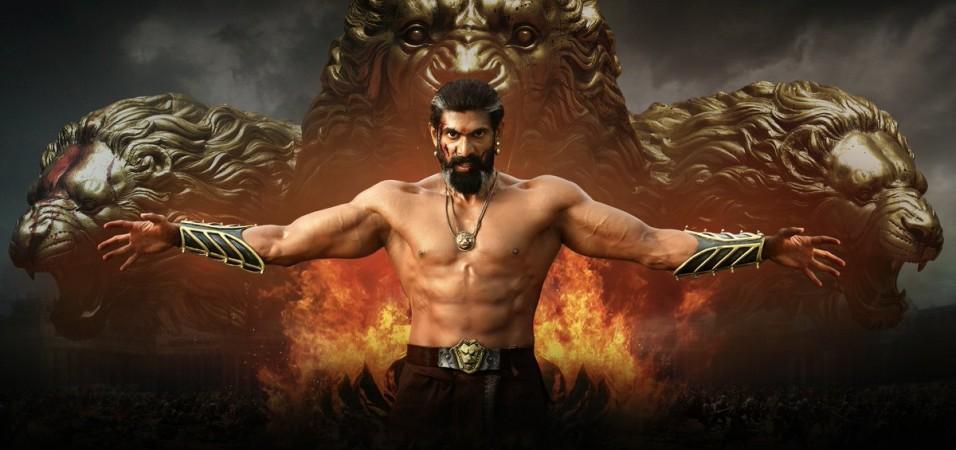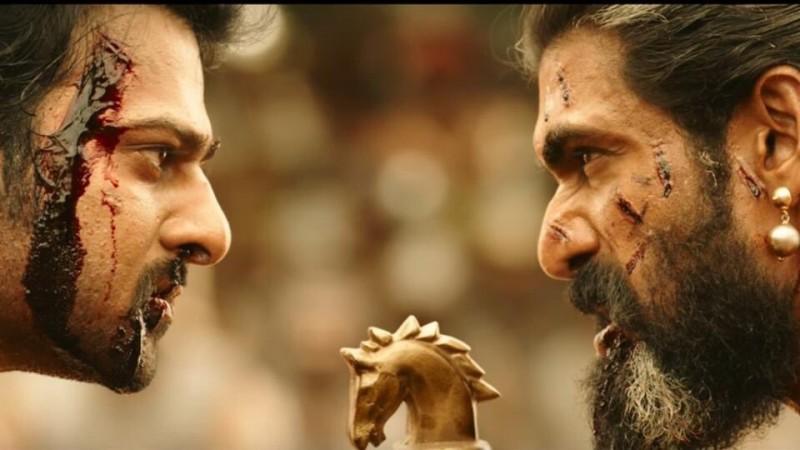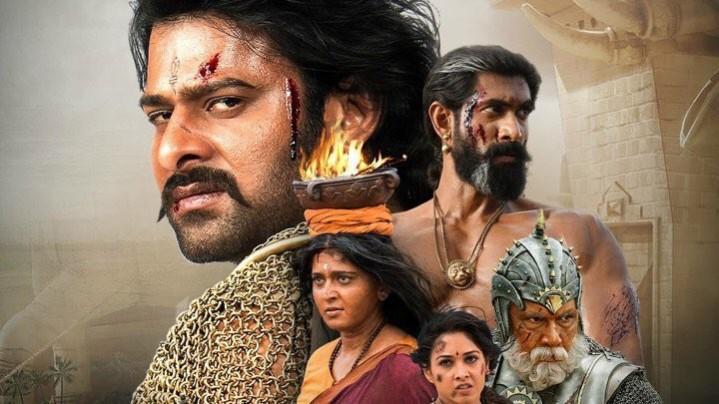
The two Baahubali films by SS Rajamouli are centred around two eponymous characters: Amarendra and Mahendra Baahubali. However, either story would not have been possible without chief antagonist Bhallaladeva, played with sneering menace by Rana Daggubati.
His is one of the most fleshed-out characters in the film. While almost everyone is painted in broad strokes, story and screenplay writer KV Vijayendra Prasad – who also happens to be Rajamouli's father – uses some deft touches to nuance Bhallaladeva, helping us – the viewer – get a glimpse into his mind.
And that glimpse as well as his words and actions give us a more-than-enough idea of who he is: an impotent or gay sexual sadist! Look at all the signs throughout both films, and each one points to this. Here's how:
Possible homosexuality, impotence or asexuality
Throughout both The Beginning and The Conclusion, both Mahendra and Amarendra Baahubali have been depicted as red-blooded men who love their women. In the first part, we see Mahendra aka Shivu aka Shivudu wooing Avantika – albeit with dollops of misogyny – and finally winning her love. In the second, we see Amarendra doing much the same thing. Amarendra is also not averse to a casual flirting: Remember that wink to the women gathered to see him practise in the first part?
Bhallaladeva, on the other hand, is possibly never shown with women. In the first part, he is shown taming a bull, which could be a thinly-veiled allegory for taming the alpha male – irrespective of species. In effect, the scene could be interpreted as Bhallaladeva proving himself an alpha and ascertaining his masculinity, but not his sexuality.
Also, he surrounds himself with men. Also, when he and Amarendra go after the traitor that was Saket (Sakethudu), it is Amarendra who sings and dances with the ladies while Bhallaladeva searches for Saket. And then there is his weapon of choice: Bhallaladeva wields a mace, which is oddly phallic in its shape, use and significance. So he is either trying to compensate for his impotence, or trying to wield his manhood through his weapon at a time in history or phantasy when it is not ok to be a homosexual.

But what if he is entirely asexual? That possibility is strong, especially in light of evidence that while Bhallaladeva has kept Devasena imprisoned for many years and let the elements of nature do their trick on her, he has not touched her sexually, even though there are precedents that a conquering or victorious king can take the defeated or dead king's wife as his own.
That being said, other evidence points more to his impotence, but that explanation will have to come with the reasoning behind why he is being branded a sexual sadist.
Sexual sadism
The American Psychiatric Association describes sexual sadism as "condition of experiencing sexual arousal in response to the extreme pain, suffering or humiliation of others." That is exactly what Bhallaladeva experiences – and makes no bones when articulating as much – when he has Devasena imprisoned. He clearly tells her after snatching her away from her son in the third act from the film that seeing her in chains in public gives her more pleasure than ruling Mahishmati. That's some serious BDSM talk right there!
And then there is what he does to her when she is actually on the floor of the chariot with him as he races back to Mashishmati from the battlefield: He puts his foot on Devasena's head, as a sign of having subjugated her. Also, he has not bothered to kill the man who has killed his son, but is more concerned with bringing Devasana back to be chained like she has been for 25 years! And look at the way he sniffs the chains – or rubs it on his face, or whatever else you intepret that is.

Speaking of Bhallaladeva's son, Rana Daggubati has confirmed that Bhadra was a surrogate, and that was why Bhallaladeva's wife was never seen. What if we take that a little further and say Bhadra was not Bhallaladeva's son at all? What if we say he was adopted and the "surrogate" tag was given so people would not question Bhallaladeva's masculinity?
That there was not much love from Bhallaladeva's side in this is evident from his reaction when his son's decapitated head lands in his hands. Any father would be disconsolate, but Bhallaladeva instead chooses to continue his attack on Mahendra Baahubali and Devasena. More specifically, he is more interested in getting Devasena back in chains to satisfy his sexual and sadistic urges.
Leaning towards impotence
So which is it? Is Bhallaladeva homosexual, impotent or simply asexual? He can't be both a sexual sadist and asexual, and since we see that he is the former, we are left with the question of his possible impotence or homosexuality. This is where his treatment of people and some other actions come in.
Consider what he did to the corpse of Amarendra Baahubali. Although the censor board chopped the scene and replaced it with closer shots of Prabhas lying deathly still, we can surmise from the sounds and Bhallaladeva's words that he is inflicting a fresh wound on the body with almost every syllable he speaks. That is a sign of sexual frustration.
But Bhallaladeva was king, and he could have still had an active homosexual life if he had wanted. Remember how Sivagami was building a Vasant Mahal – a special palace for the Spring season – for Bhallaladeva? He could have kept his actions limited there, but instead chooses to fight dirty for the throne. What if he has come to think by this time that he, like his father Bijjaladeva, is being kept away from the throne because of his disability? Since homosexuality is not a disability, it has to be impotence!

People knew Bhallaladeva was impotent
There are hints as early in the first half of Baahubali – The Beginning that at least Bhadra knew of his foster father's impotence, and even made an off-hand remark about it. After he recaptures Devasena, he tells her – and we are paraphrasing here – she was sexually aroused as soon as she saw a man. Does that mean Bhallaladeva – who she has seen face to face for 25 years – is not a man because she has not hankered after him?
Even Sivagami gives hints of knowing that her own son is impotent. Instead of getting him married – like she plans for Amarendra Baahubali – Sivagami tries to gift Bhallaladeva a Vasant Mahal and a weapon for hunting, maybe to help him take his mind off his impotence. Her knowledge of his impotence also adds an extra dimension to the surprise she expresses when she is told Bhallaladeva has been enamoured by Devasena. It also explains why she readily promises him her hand in marriage.
Meanwhile, yet another off-hand remark catches our attention. She refers to Devasena as Sivagami's would-be daughter-in-law, rather than Bhallaladeva's prospective wife. Is this once again an inadvertent admission that this new woman in the royal household would be more of a daughter-in-law than a wife? Is that because she knows Bhallaladeva, being impotent, will not be able to consummate his marriage?
And finally, there's the issue of Bhallaladeva's statue, which – in light of the aforementioned arguments that lead us to believe he was impotent – assumes greater significance, because now we can surmise that it was through this statue that he was looking to establish his masculinity. However, he was once again emasculated by the crowd – as had happened at his coronation – that cheered more for Baahubali then him.
Speaking of coronation, isn't the umbrella above Bhallaladeva's head breaking off yet another indication of a defective masculinity or, in other words, impotence? And finally, could that same thing be said for the fate of the golden statue in the final moments of Baahubali – the Conclusion? Isn't its fall and breaking into pieces yet another indication of Bhallaladeva being emasculated by Mahendra Baahubali?
Come to think of it, were these repeated – but possibly unintended – feelings of emasculations harboured by Bhallaladeva against the two Baahubalis the main reason he hated them?
Tell us what you think in the comments section, or tweet to us with the hashtag #WhoIsBhalla.


!['Had denied Housefull franchise as they wanted me to wear a bikini': Tia Bajpai on turning down bold scripts [Exclusive] 'Had denied Housefull franchise as they wanted me to wear a bikini': Tia Bajpai on turning down bold scripts [Exclusive]](https://data1.ibtimes.co.in/en/full/806605/had-denied-housefull-franchise-they-wanted-me-wear-bikini-tia-bajpai-turning-down-bold.png?w=220&h=135&l=50&t=40)











!['Had denied Housefull franchise as they wanted me to wear a bikini': Tia Bajpai on turning down bold scripts [Exclusive]](https://data1.ibtimes.co.in/en/full/806605/had-denied-housefull-franchise-they-wanted-me-wear-bikini-tia-bajpai-turning-down-bold.png?w=220&h=135)


![Nayanthara and Dhanush ignore each other as they attend wedding amid feud over Nayanthara's Netflix documentary row [Watch]](https://data1.ibtimes.co.in/en/full/806599/nayanthara-dhanush-ignore-each-other-they-attend-wedding-amid-feud-over-nayantharas-netflix.jpg?w=220&h=135)